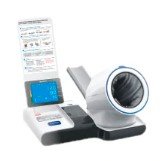Addressing Disparities in Access to Phlebotomy Services: Strategies and Importance of Collaboration
Summary
- Understanding the social determinants of health
- Strategies to address disparities in access to phlebotomy services
- Importance of collaboration and community partnerships
Introduction
In the United States, access to medical services can be influenced by a variety of factors, including social determinants of health. These determinants, such as socioeconomic status, education, and access to transportation, can impact an individual's ability to receive necessary medical care. As a result, disparities in access to phlebotomy services can occur, leading to gaps in patient care and health outcomes. In this article, we will explore strategies that can be implemented in medical labs to address disparities in access to phlebotomy services based on social determinants of health.
Understanding the Social Determinants of Health
Social determinants of health are the conditions in which people are born, grow, live, work, and age that can impact their health outcomes. These determinants can include factors such as:
- Socioeconomic status
- Education level
- Access to transportation
- Healthcare access and affordability
Impact on Access to Phlebotomy Services
Disparities in social determinants of health can significantly impact an individual's access to phlebotomy services. For example, individuals with lower socioeconomic status may not have adequate health Insurance Coverage to afford phlebotomy services, while those with limited access to transportation may struggle to reach medical labs for necessary blood tests. These barriers can result in delays in diagnosis and treatment, leading to poorer health outcomes.
Strategies to Address Disparities in Access to Phlebotomy Services
Medical labs can implement various strategies to address disparities in access to phlebotomy services based on social determinants of health. Some of these strategies include:
Mobile Phlebotomy Services
- Offering Mobile Phlebotomy services to individuals who have limited access to transportation
- Partnering with community organizations to reach underserved populations
Telehealth Options
- Providing telehealth options for patients who may have difficulty visiting a medical lab in person
- Offering remote phlebotomy services for patients in rural or remote areas
Reduced Cost Options
- Implementing sliding scale fees for patients with lower socioeconomic status
- Developing partnerships with insurance providers to offer discounted phlebotomy services
Cultural Competency Training
- Providing cultural competency training for phlebotomists to better serve diverse patient populations
- Ensuring that language barriers are addressed to improve communication with patients
Importance of Collaboration and Community Partnerships
Collaboration and partnerships with community organizations are essential in addressing disparities in access to phlebotomy services. By working together, medical labs can reach underserved populations and ensure that all individuals have access to necessary blood tests and diagnostic services. Community partnerships can also help raise awareness about the importance of phlebotomy services and encourage individuals to prioritize their health.
Conclusion
Disparities in access to phlebotomy services based on social determinants of health can have a significant impact on patient care and health outcomes. By implementing strategies such as Mobile Phlebotomy services, telehealth options, reduced cost options, and cultural competency training, medical labs can address these disparities and ensure that all individuals have access to necessary blood tests. Collaboration and partnerships with community organizations are essential in reaching underserved populations and improving health equity.

Disclaimer: The content provided on this blog is for informational purposes only, reflecting the personal opinions and insights of the author(s) on the topics. The information provided should not be used for diagnosing or treating a health problem or disease, and those seeking personal medical advice should consult with a licensed physician. Always seek the advice of your doctor or other qualified health provider regarding a medical condition. Never disregard professional medical advice or delay in seeking it because of something you have read on this website. If you think you may have a medical emergency, call 911 or go to the nearest emergency room immediately. No physician-patient relationship is created by this web site or its use. No contributors to this web site make any representations, express or implied, with respect to the information provided herein or to its use. While we strive to share accurate and up-to-date information, we cannot guarantee the completeness, reliability, or accuracy of the content. The blog may also include links to external websites and resources for the convenience of our readers. Please note that linking to other sites does not imply endorsement of their content, practices, or services by us. Readers should use their discretion and judgment while exploring any external links and resources mentioned on this blog.
